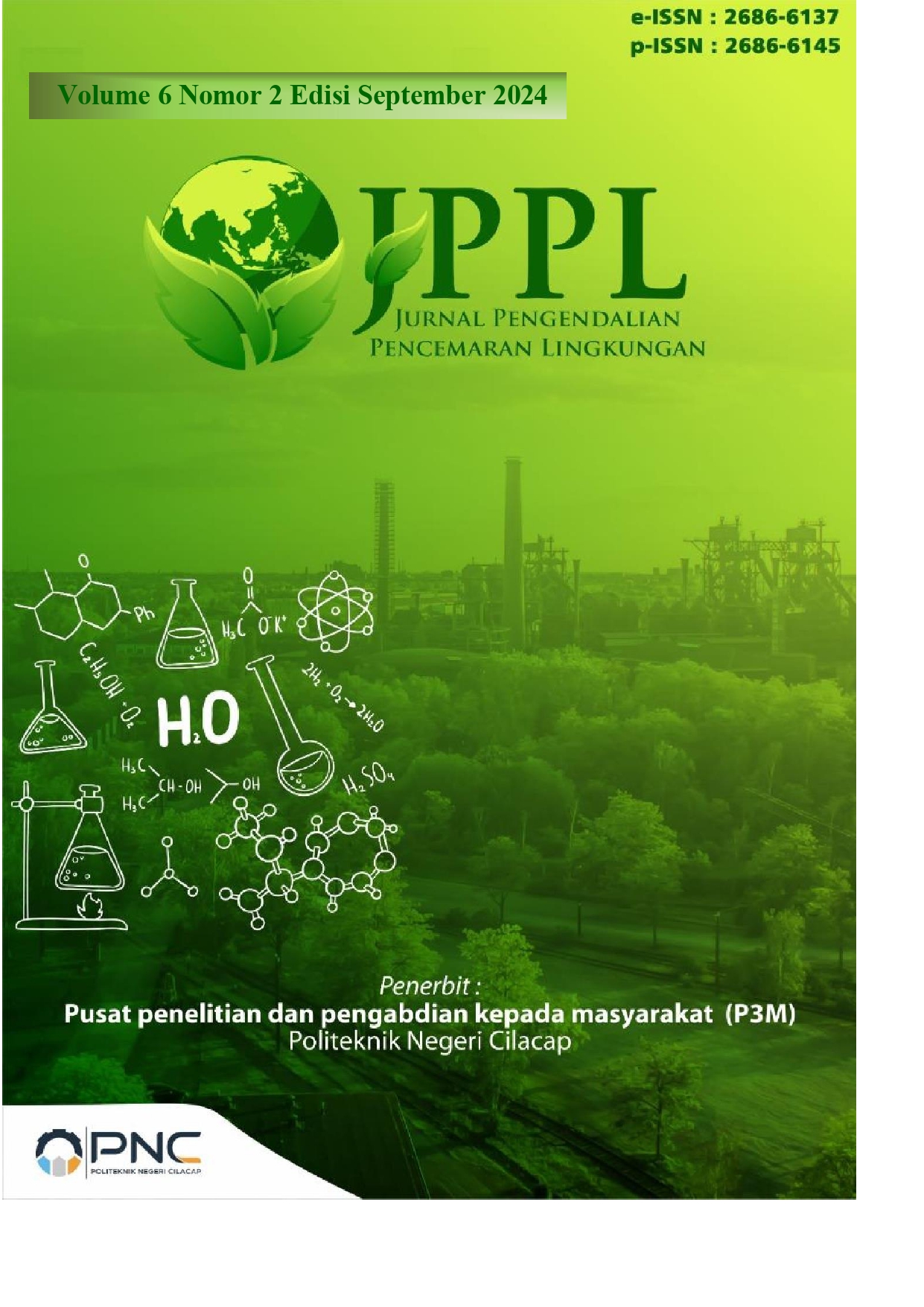Reduction of Congo Red Dyes via Coagulation-Flocculation with Chitosan from Mud Crab Shell (Scylla serrata)
 Abstract views: 182
,
Abstract views: 182
,
 PDF downloads: 194
PDF downloads: 194
Abstract
The mangrove crab (Scylla serrata) represents a notable component of the Indonesian marine biota. The utilization of mangrove crabs as a food source results in the deposition of shell waste. The shells of these crustaceans contain chitin, which can be synthesised into chitosan. One of the advantages of chitosan is that it can be utilized as a coagulant to reduce congo red dye. This study aimed to evaluate the potential of mangrove crab shell-based chitosan and its performance in the coagulation and flocculation process using the jar test method. The chitosan derived from mud crab shells exhibited a degree of deacetylation (DD) value of 74%. The operating parameters for the coagulation and flocculation process were a coagulant dosage of 25-150 mg/L and a congo red concentration of 100-250 mg/L. The results of the study demonstrate that an increase in coagulant dose results in enhanced treatment performance, reaching a point of saturation where performance declines or stabilizes. Similarly, elevated initial Congo red concentrations also influence the effectiveness of higher coagulation. The removal of congo red dye with the effect of coagulant dose and initial concentration of congo red resulted in a percent removal of up to 99.9% at a coagulant concentration of 150 mg/L and a congo red concentration of 250 mg/L
Copyright (c) 2024 Tarikh Azis Ramadani, Roihana Fajrin, Novi Eka Mayangsari, Ulvi Pri Astuti

This work is licensed under a Creative Commons Attribution 4.0 International License.

















